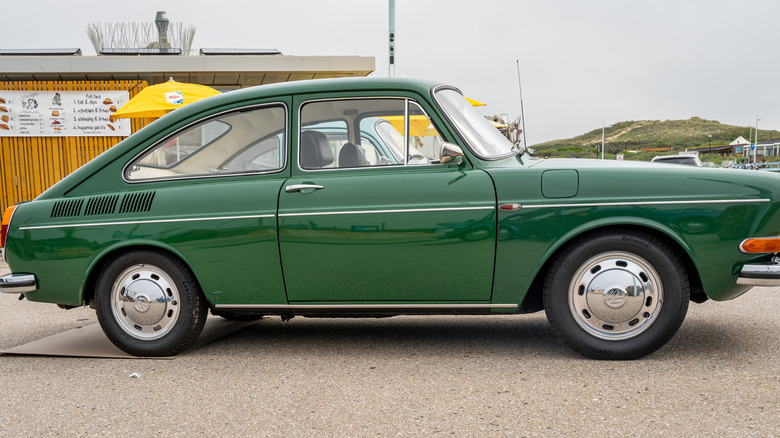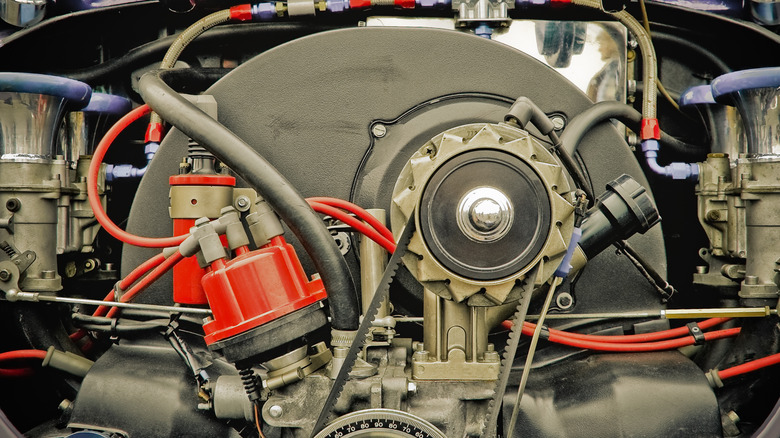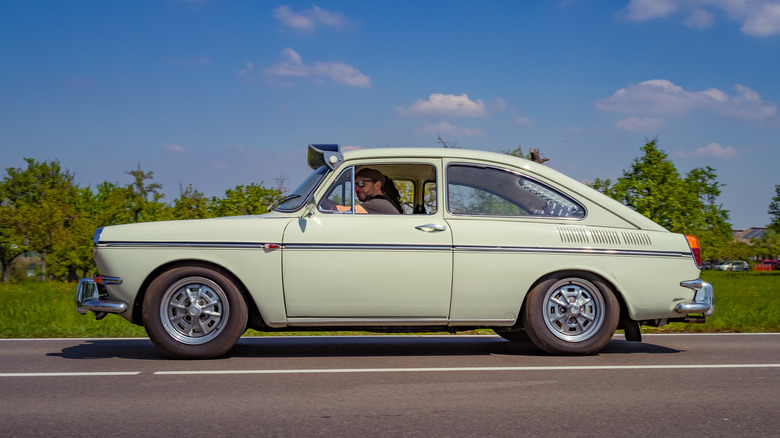Volkswagen Type 1 Vs Type 3 Engines: What's The Difference?
Volkswagen began building the Type I Beetle in 1945 and first brought it to the United States four years later, selling more than 15 million Type I autos before the last one rolled off the line in Mexico in 2003. The Type II van appeared in 1950 and survived until 2021 through six generations and several official and unofficial rebadgings, at various times going by Transporter, Microbus, Vanagon, Westfalia, and Kombi. While the Type II was still in its first iteration in 1961, VW introduced the Type III, initially as a two-door 'notchback' sedan but soon after as a 'squareback' station wagon and under the Karmann Ghia label as the Type 34.
Like the Type I, Type III Volkswagen models had their engines mounted in the rear to maximize cargo and passenger space, but the Type III engines differed from their Beetle counterparts in many key respects, primarily the different cooling systems and the way in which air was channeled to the engines in the vehicles they powered.
The Type III engine was bigger and stronger than the Type I engine
The first Type I Beetles were powered by a 1,131 cc flat-four that produced just 25 horsepower, but by the time the Type III was introduced at the 1961 Frankfurt International Motor Show, the Type I engine had grown to 1,200 cc and could make 40 horsepower. Type IIIs got a newly designed 1,493 cc, 53 horsepower motor with a cast aluminum and magnesium alloy block. The Type III engine had a forged steel crankshaft, at the end of which was attached to the engine's cooling fan. This configuration meant the fan sat lower on the block than on Type I engines and the generator was mounted lower on the engine as well.
The external oil cooler was rotated sideways, and a second carburetor was added to the Type III engine in 1966. The additional fuel the second carb provided boosted power output to 65 horsepower. However, the engine was still just 18 inches from top to bottom, allowing it to fit under the trunk floor of the Type III fastback that was introduced that year. At 249 pounds, the 1966 Type III engine outweighed its 1,300 cc Type I counterpart by just five pounds but produced 15 more horsepower.
Type IIIs got fuel injection sooner than Type Is
A Bosch Jetronic fuel injection system replaced the twin carburetors on the Type III engines beginning in 1968, although fuel injection didn't make it to the Type I Beetle until 1975. Volkswagen had stopped production of the Type III two years earlier to focus on the 1974 Golf, which had a front-mounted, water-cooled engine but nowhere near the style of either of its timeless predecessors. According to Hemmings, VW made more than two and a half million Type IIIs before dropping the model.
Because the engine compartments in Beetles had solid floors, Type I engines were cooled with air brought in via vents above the engine, but Type III engines got cool air funneled through vents in the rear fenders that passed through ductwork to the fan in the rear of the engine compartment. If you're swapping a Type I engine into a Type III vehicle, you'll have to account for this difference and swap out the oil cooler, tin, and generator. There are also slight differences in how the oil dipstick tube is mounted between the two engines.


